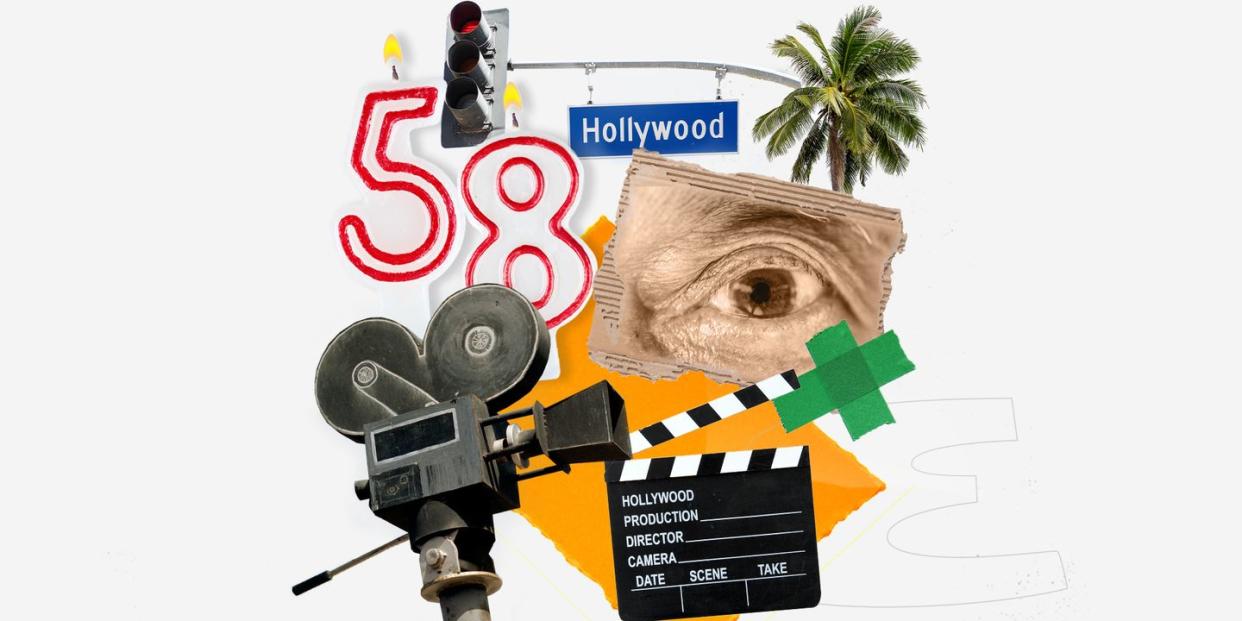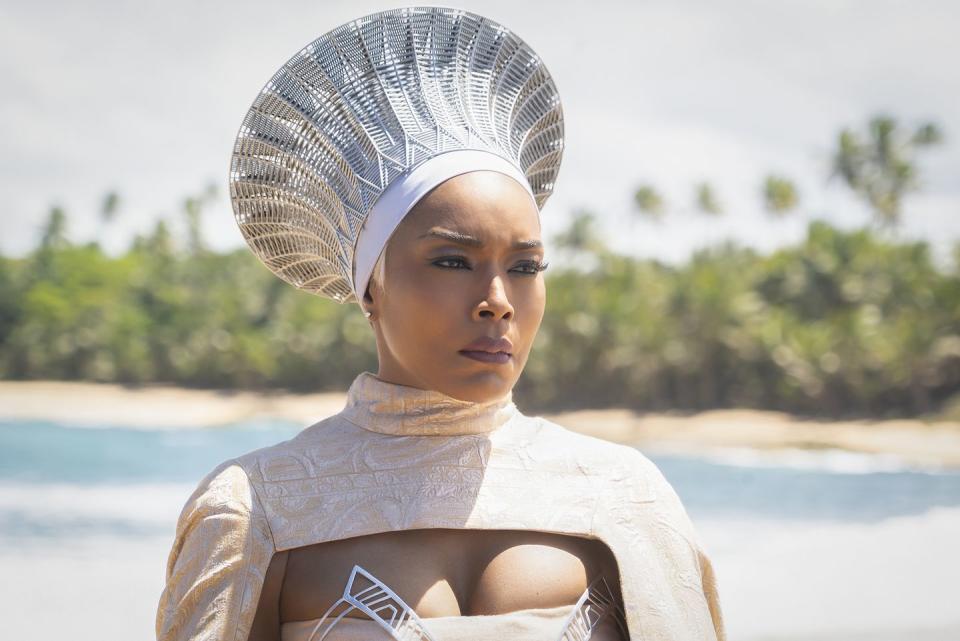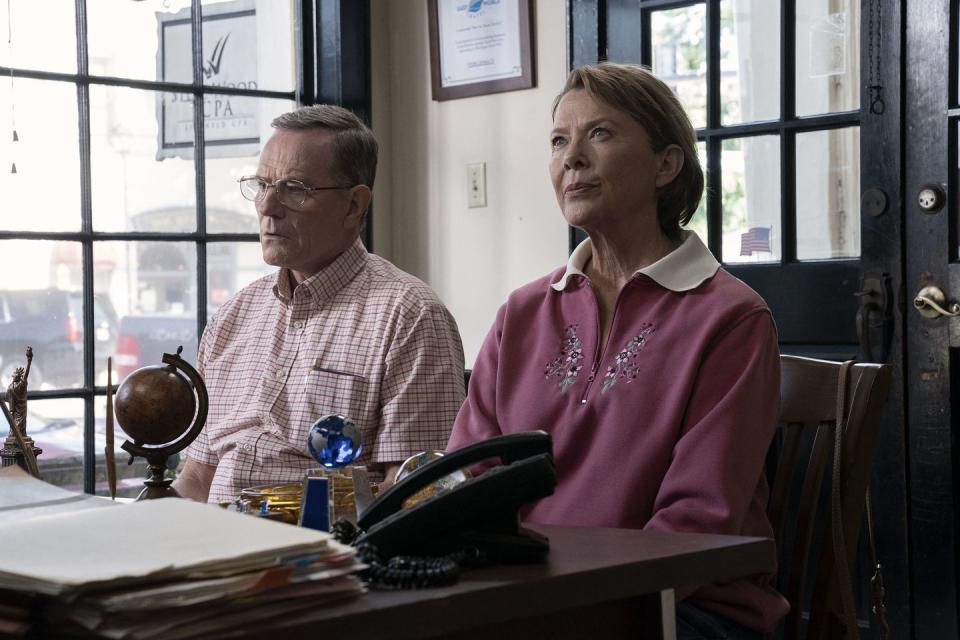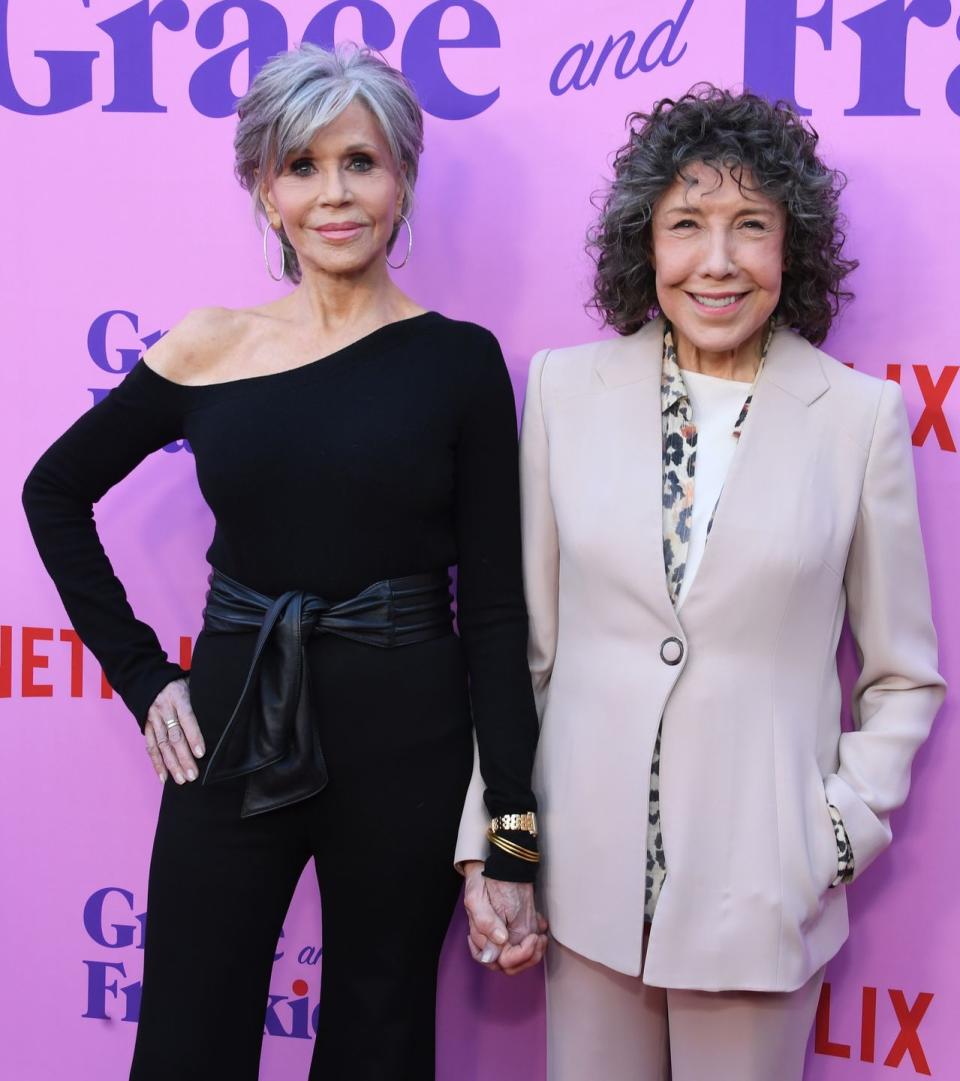There's a Huge, Fast-Growing Audience That Hollywood is Ignoring

Hollywood is facing plenty of big problems right now. But Hollywood also has an enormous opportunity that, so far, it has largely ignored.
Let’s start with the challenges, including perhaps the biggest one of all: the ongoing atomization of the entertainment industrial complex. Grabbing a giant audience was once as simple as producing a major theatrical release or a live television broadcast that would aggregate tens of millions of people. Those days are long gone. True, the Super Bowl still holds the attention of over 100 million viewers and, according to the BBC, 5.1 billion or roughly 63.2% of the world’s population watched the state funeral of Elizabeth II. But these are rare moments. It’s been 40 years since the farewell episode of M*A*S*H, which hit 125 million viewers in the U.S. and had a 60.2 Nielsen rating. Today, a rating of 7 is considered a huge success, if ratings even matter anymore. And then there is the existential question of what is content anyway? How do you calculate the value of a TikTok video compared to a sitcom episode?
None of this is completely new. Over the decades, Hollywood has had to adjust to the birth of cable television, then VHS and DVDs, and now the onslaught of more than 200 streaming services, led by the two juggernauts, Netflix and Amazon Prime. Social media platforms, short-form video, online games, and all things mobile compete to get the attention of today’s viewer. It can be a harrowing journey to break through the clutter and figure out how to make a modern-day movie, series, or piece of content that delivers a hit-sized audience—yet alone a profitable one. Yet the magic can still happen. Think Top Gun: Maverick and Black Panther: Wakanda Forever.

Today’s wildly complicated media landscape is just as challenging for companies to monetize as it is for consumers to navigate. Consider that, according to the Deloitte Digital Media Trends Study, U.S. users have an average of four streaming service subscriptions. But experts point to a high rate of churn as customers often subscribe to a service to catch a hot new series only to then cancel after they’ve finished it. The viewer is in control like never before. And equally as fickle, regardless of their age.
These dynamics are playing a role in the standoff between the studios and the Writers Guild of America, which recently went on strike. The writers say they aren’t being paid a fairly in the brave new world of streaming and want better wages and a bigger share of residuals for their work on streaming services. The longer the standoff goes, the bigger the disruption will be for the pipeline of new shows and films. And as everyone in the business knows, great storytelling is what matters most in the battle for consumers regardless of the changing platforms and business models.
Meanwhile, in a post-COVID world, movie theaters still have a long way to go to get back to pre-pandemic attendance levels. According to the 2021 THEME Report from the Motion Picture Association, the U.S./Canada box office market only recovered to $4.5 billion vs. $11.4 billion in 2019.The number of screens in the U.S. remained stable at just over 40,000, but the question remains: Will the moviegoer come back in a meaningful way?
While Hollywood execs ponder that question, they’re also reckoning with recession fears, inflation, and higher interest rates. And after years of expansion and experimentation, a wave of consolidation has begun in the streaming world. That includes HBO Max being re-branded as MAX and incorporating content from Discovery+, as well as Disney’s announcement that it plans to combine Disney+ and Hulu into one app.
But even as media power players continue to jockey for market share, there is one phenomenon happening in the U.S. and most of the developed world that the entertainment industry has yet to recognize, embrace, and capitalize on. And it represents a powerful opportunity to reel in enormous audiences. What is this market that is hiding in plain sight? The rapidly growing number of global consumers over the age of 50.
A demographic tsunami is sweeping across the globe. But as one move and TV industry veteran tells me, it’s not a very sexy topic among entertainment execs. Much of Hollywood is still not enamored with facts and data. Gut is overvalued versus true insights, he explains. That gut also includes a deep-seated sense of ageism throughout the entertainment world.
However, the data is undeniable. Today’s 50-plus consumer is reshaping everything in our culture, as they live longer and demand new ways to entertain them. They already comprise 36 percent of the U.S. population and some 10,000 people a day are turning 50. In 2030, the first Millennials turn 50 and by then one in five Americans will be 65 or older. There will be more people over 50 than under 18. The same plays out in developed nations from China to the U.K.
In the U.S., the over-50-year-olds spend a total of $8.3 trillion a year right now and by 2030 will be spending $13 trillion a year. They hold more than 70% of the $92 trillion in private wealth in the U.S. They’re already a generation like no other that has lived on planet earth.
It’s a tech-savvy, highly engaged consumer group with a lot of disposable income to spend on entertainment and culture. And these folks are more and more vocal in how they are represented in movies, television, and advertising. They are way ahead of the culture in attitude and behaviors—and content producers are way behind.
This new social movement is being driven by the agitated baby boomers who have now taken on aging as their newest cause to disrupt the world, and Gen X is right with them. Most of the entertainment world has ignored them, especially when it comes to purposely creating content that is relevant to their new sensibility. The same can be said for how characters are portrayed on the screen.
Just ask Jane Fonda. “Older women are the fastest-growing demographic in the world,” says the Hollywood legend. “It’s a business and if they want to meet the market, they’re going to have to start writing television shows about older women, and they’re doing that.”
Fonda herself has proven that point. Her wildly successful Netflix series Grace and Frankie, co-starring Lily Tomlin, shattered all records and expectations, lasting seven seasons and ninety-four episodes. The show has rewritten the playbook for how to create content not just for an older audience, but to engage people of all ages.
According to PwC, the average hours per week that the Boomers spend on consuming traditional television media is decreasing, while over-the-top video and streaming has had significant growth. The Wall Street Journal reported that people over 50 accounted for 39% of streaming watch time as of May 2022, up from 35% a year earlier.

What is critical about this shift is that creators will no longer be able to ignore this enormous cohort of consumers, as the numbers will speak for themselves.
According to CJ Bangah, PwC US entertainment and media principal, many subscribers give their birth date when they sign up for a streaming service. But even if they don’t, they can be linked to other data sources. Says Bangah: “Combine the existing data with evolving algorithms and artificial intelligence and Hollywood will have even better data to see the viewing pattern of this group. Whether it is content or advertising, the industry is going to have learn and understand it. It will be a call to action to more relevant content on all fronts.”
It's harder to identify the 50-plus consumer who goes to movie theaters, and the conventional Hollywood wisdom is that younger moviegoers are the core audience for big popcorn movies. But there is data to suggest that the studios should focus more on the older set. As the THEME Report outlines, people 50 and above comprise 36 percent of the U.S. population. And in 2021, 32 percent of that 50-plus group were moviegoers. (If anything, that portion has probably risen as the pandemic has eased.) It is the right content that will keep them coming back for more.
But Hollywood has a major blind spot when it comes to creating mature characters. As a result, the way that aging is portrayed in films and on TV is still mostly through outdated stereotypes and preconceptions. There are countless studies from USC Annenberg, The Geena Davis Institute and many more that shed a light on the systemic ageism that continues to prevail in the entertainment culture, particularly for women, who also face sexism. While some studies focus on diversity in Hollywood, what is missing in those studies is to identify how many people on the screen—along with show-runners, directors, cinematographers, and more—are over 50. Age is also a diversity issue, with added complexity for those who already face discrimination.
Madeline Di Nonno, president and CEO of the Geena Davis Institute on Gender in Media, says that a study her organization did in collaboration with the NextFifty Initiative found that 83 percent of men and women agree with the statement: “Sometimes I feel like the media culture doesn’t realize how much they stereotype older people.” Only 25 percent are very satisfied with the accuracy of characters who portray their age vs. 42 percent of those 18 to 49. “So many characters over 50 are shown to have no romantic interludes and certainly no love life and are mostly shown indoors in domesticated ways,” says Di Nonno. “Female characters more often than not serve as a romantic partner, often times much, much younger than their male counterpart.”
Another study by AMICA, showed that only 2 percent of the top movies of 2021 had any senior person in the role of lead actor. When older actors are cast, they’re usually playing a grandparent or parent, or a villain instead of a hero. Older actors rarely get to play multidimensional characters. Male actors get a bit of a pass in playing different characters as they age. Think Clint Eastwood, Harrison Ford, and Morgan Freeman, who has had more acting credits over 60 than any other male actor, according to AMICA.
Bonnie Fuller, CEO and editor in chief of Hollywood Life, a website with 15 million monthly unique visitors, explained that her audience is primarily 25 to 45 years old, and the readers are very interested in celebrities over 50. “Brad Pitt is about to turn 60 and he is a sex symbol to my audience,” she says, adding that, “There is still not enough dynamic, creative content for older actors and actresses.”
A lot of the issue is in the creative process itself.
According to Nitza Wilon and Elizabeth Kaiden, the cofounders of The Writers Lab in New York, it’s true that there are breakout characters like Emma Thompson in Good Luck to You, Leo Grande, a film that explores the sexual experience of a woman over 50, but one of the challenges continues to be internalized misogyny, along with the fear of aging itself by Hollywood executives. “In 2022 films, there were 492 total screenwriters of which only 20.9 percent were women and only 61, or 12.4 percent, were women over 40,” says Kaiden. “The community of women over 40 continue to struggle to get past the gatekeepers to get authentic stories made.”
In today’s broadcast television, 53-year-old actress Queen Latifah plays Robin McCall, a breakout female character in The Equalizer. It was the number one ranked show for total households in 2022, a stat that shouldn’t go unnoticed.
There have always been pioneers pushing on the agenda to include more complex female characters in television series. Producer and author Nina Tassler, former Chairman of CBS Entertainment and the exec who signed off on The Good Wife, says that she and her team were always aware of the value of the older audience even though advertisers may have thought differently. “When we introduced shows, we always looked for the sweet spot of appealing to a cross-generational audience,” she says, adding that she is “heartened by how the streamers in particular have been able to break through with parts for women that are changing the game, like Mare of Eastown with Kate Winslet.”
Many characters over 50, both male and female, are presented as old and tired, trying to be too hip, being infantilized, or frail and withdrawn. More than one broadcast and cable executive that I talked to about the barriers in introducing more programming that appeals to an older viewer had the same opinion. Says a top executive at one of the major cable companies: “Advertisers continue to be youth-obsessive and [stuck on] what is an old standard of not being interested in any viewer over 54. They claim that they get them as the gravy to a media buy, but they are missing a massive audience that has changed a lot.”
Maybe that’s one of the reasons that the streaming services are leading on content that is creating new ways to see people over 50. In episode three of the Last of Us, we saw a gay character over 50 that not only broke all of the stereotypes but represented a completely different representation of a gay man over 50.
Jennifer Holmes, a Performing Arts Scholar and executive director at Pace Performing Arts says, “It’s all about the sex appeal factor in making a lot of what gets produced. That representation is generally with younger characters. The focus is also on emerging artists in their twenties. What about artists who emerge in their fifties?”
What will it take for Hollywood to wake up to the realization that the over-50 market is its growth market for the future?
There are some promising efforts. Wallis Annenberg, founder of Wallis Annenberg GenSpace, points out that Hollywood has been slow to share stories centered around older adults, but recent hit TV shows like Grace & Frankie and Hacks show everyone that there is nothing to fear in aging. Onscreen portrayals that are less focused on decline and instead depict the human experiences that we all share—love, friendship, dreams, and challenges—will help change the way America views aging, she says. Her organization has even created a Resource Guide for Content Creators, as well as holding various talks and workshops to help the entertainment world understand how to evolve into more contemporary characters and storytelling.

Amy Baer, President of Landline Pictures, a movie label at MRC, is way ahead of the curve with regards to seeing the huge upside in how the 50-and-older market are primed for a bigger opportunity. Only four years old, Landline has already released a movie comedy geared towards mature moviegoers, Jerry & Marge Go Large, starring Annette Bening and Bryan Cranston as a married couple who win the lottery. Next up is Renee Zellweger in The Back Nine as a divorcee who decides to chase her deferred dream as a pro golfer. Three other films are about to go to market, and there are at least 15 more projects in various stages of development. Scripted series are next on the agenda.
Baer says that she must constantly sell the upside to the over-50 market and the fundamental issue is always convincing those that have the power to greenlight a project. “There are great examples of successful films made explicity for this market,” says Baer, citing The Best Exotic Marigold Hotel and Somethings Gotta Give. “But every time there is a success like that, Hollywood executives say, ‘WOW, we had no idea that would work.’”
Maybe Hollywood can also look to other markets for inspiration to find success. One observer pointed to the UK entertainment industry. Think of the richness of roles that British actors and actresses play that are against an aging type. The AMICA study has identified Helen Mirren as the actress with the most acting credits (46) over the age of 60. She has played everyone from a queen to an assassin. Judi Dench, who ties Mirren with the most acting credits (46) over 60 has also played a queen as well as the role of the powerful M in seven Bond films.
There are examples in Asia as well. A recent New York Times story explains that one of China’s hottest new genres of television is dating shows for older people. At least 10 shows have emerged in recent years and the contestants address topics like sex, money and appearance. In Japan, BS Fuji created a show titled Nippon no Kaname (the Heart of Japan) that was a cross-generational look at addressing the aging population there. The country has one of the largest populations of 65-and-over in the world and ranks as having one of the highest life expectancies in the world.
Many people agree that in order for Hollywood to reflect the new authenticity with stories and characters over 50, there needs to be an overhaul of long-standing attitudes. “The muscle memory is that youth drives culture and shouldn’t we challenge that?” says one industry veteran. Where, he wonders, are the filmmakers and creative people who are gifted with the ability to be ageless in their approach in identifying fresh stories?
A recent story in The Ankler—"Everyone Who Ran Hollywood Used to be Young. What happened?”—made the point that many of the powerbrokers, the people who have the ability to change the content game by greenlighting more relevant stories to older viewers, are themselves in the over-50 demographic. They are that audience. So they should have a keen understanding of what the audience might want.
As with most social movements, it’s people who force change. They want to see themselves represented in ways that are authentic and different from stereotypical images.
Hollywood has an opportunity for major upside if creators write, produce. and distribute stories that reflect characters that are genuine and stories that are not cliches. Viola Davis, Michelle Yeoh, and Jennifer Coolidge are all recent examples of older actors playing multidimensional characters.
Throughout its history, the entertainment world has played a pivotal role in helping to shape cultural, social, and political evolutions. Not only does Hollywood now need to change its worldview on age representation, but also it needs to be the catalyst to help change attitudes about aging. The audience is already there.
You Might Also Like
